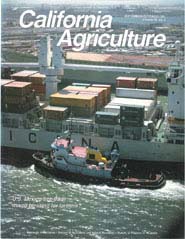All Issues

Volume 45, Number 5
News and opinion
Comparisons in the Imperial and Mexicali valleys reveal Mexico's lower yields and higher finance and interest charges result in higher costs per unit produced.
With current costs and prices, livestock and dairy cattle production is most cost-effective in the U.S.
Fresh asparagus imports may reduce asparagus prices in the short run, but in the long run imports are offset by reductions in domestic production.
The lucrative Hong Kong market may be threatened when the People's Republic of China regains control in 1997.





